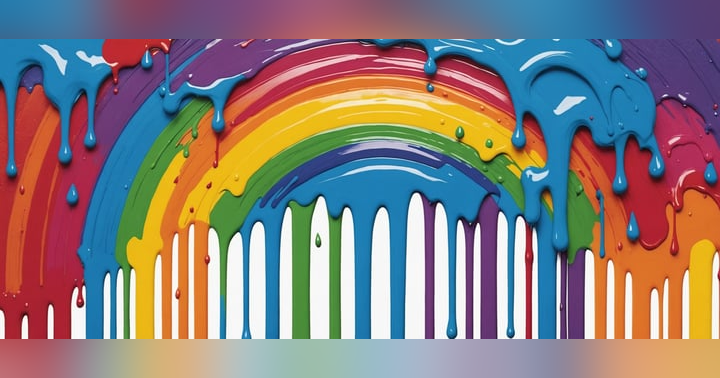Yas Queen: The Art, Evolution, and Cultural Impact of Drag

The Art of Drag
Drag has long served as a powerful form of self-expression, blending performance, artistry, and cultural commentary. While its origins trace back centuries, drag has evolved into a multifaceted phenomenon—beginning in underground queer spaces and gradually making its way into mainstream entertainment. Today, drag encompasses a broad spectrum of identities and artistic expressions, allowing performers to explore gender, entertain, and challenge societal norms.
Bev, Philadelphia's Queen of Comedy, views drag as a performance-driven art form. She emphasizes that, for her, drag is about entertaining and making people laugh. Having grown up before the mainstream popularity of RuPaul's Drag Race, Bev sees drag as her job—an elaborate transformation into a character, donned in sequins, wigs, and exaggerated makeup, designed to captivate audiences.
The Evolution of Modern Drag
Drag's rich history spans from Shakespearean theater to the underground ball culture of the 1980s and eventually into the realm of mainstream entertainment. Films like To Wong Foo, Thanks for Everything! Julie Newmar and The Adventures of Priscilla, Queen of the Desert showcased drag queens as both entertainers and storytellers, helping establish drag’s place in popular culture. The rise of comedy queens and pageant performers also played a significant role in broadening the public's understanding of drag.
In recent years, drag brunches have become a staple of queer culture, combining performance with dining. According to drag historian Joe E. Jeffreys, these events date back to the 1950s, when restaurants incorporated theatrical elements to attract customers. Today, they offer both entertainment and community-building experiences. As Bev aptly puts it, “The gays have claimed brunch.” Despite the evolving nature of drag, its roots remain firmly embedded in theatricality, resilience, and unapologetic self-expression.
The Diverse Artistry of Drag
Drag is an ever-evolving art form that encompasses a wide variety of styles, aesthetics, and identities. While earlier drag culture adhered to traditional notions of glamour—especially within pageantry—today's drag scene embraces greater diversity. Performers blend comedy, gothic influences, burlesque, and gender nonconformity, breaking down the boundaries of artistic expression.
Today, drag artists often move fluidly between genres, as Bev notes: “All the styles have blended so much that I don't think there is a ‘I do this kind’ anymore because everybody can kind of flow in and out of different genres.” As drag continues to grow in popularity, performances are no longer limited to queer spaces; they now take place in mainstream venues, including theaters, bars, and brunch spots. This increased visibility has solidified drag's position as a dynamic platform for self-expression.
The Role of Humor in Drag
Humor is a central element of drag, serving both as entertainment and a tool for connection. Performers use wit, playful jabs, and self-deprecating humor to engage audiences, creating an environment where people feel both entertained and included. This is especially evident in venues like drag brunches, where performers often interact with unfamiliar crowds.
As Bev describes, "Being a drag queen host for a brunch like that is like being a kindergarten teacher for a bunch of drunk toddlers." The humor, blended with assertiveness, ensures that audiences—whether seasoned drag fans or first-time attendees—have an unforgettable experience. For Bev, drag is about more than making people laugh; it's about creating a shared space of celebration and inclusivity.
Drag Show Etiquette: Respecting the Art and the Performers
Attending a drag show comes with certain expectations. While these performances are lively and interactive, respectful engagement is essential for a positive experience. As Bev outlines, there are four key rules for newcomers: “Have fun. Take care of the staff. Don’t touch us. Give us your money.”
First and foremost, the audience should enjoy the show, but they must respect the boundaries of the performers. Consent is a fundamental part of modern drag culture, and audience members should refrain from touching performers or their costumes. Drag queens are artists, not props. Moreover, while drag shows are interactive, audiences should remain in their seats unless specifically invited to participate.
Tipping is another crucial aspect of drag culture. Many performers depend on tips as a significant portion of their income, so showing appreciation through financial support is an essential part of the experience. By respecting these guidelines, audiences can fully enjoy the spectacle while ensuring that performers feel valued.
The Intersection of Drag and LGBTQ+ Identity
Drag is closely tied to LGBTQ+ identity, providing a platform for the community to express itself. However, the experience of being a drag performer within the queer community can differ significantly based on factors such as race, gender identity, and social privilege.
Bev acknowledges the privilege she holds as a white performer, stating, “I am a cis-gendered white man who does [drag]. I'm not going to speak for the experiences of any other gender than my own… I know that the privilege that I have as a white performer.” She notes that drag, often at the center of LGBTQ+ celebrations, can be a tool for both celebration and resistance—particularly for marginalized individuals who face heightened vulnerability due to their gender identity.
As drag continues to grow, advocacy for those who experience oppression in its many forms remains critical. Solidarity within the LGBTQ+ community is essential to ensuring the safety of its most vulnerable members.
The Evolution of Drag in Mainstream Culture
RuPaul’s Drag Race has undeniably brought drag into the mainstream, offering greater visibility and opportunities for performers. Once relegated to LGBTQ+ spaces, drag is now featured in venues ranging from brunch spots to corporate-sponsored Pride events. This mainstream appeal has introduced drag to broader audiences, elevating its cultural significance.
However, the popularity of Drag Race has also led to criticisms of the show's influence on the drag scene. Some argue that it has created a homogenized image of drag, prioritizing high-energy performances and dramatic stunts. As Bev observes, “Drag Race has made everyone think that every drag queen does death drops and flips and splits. That is an excellent talent to have… but not every person needs to be able to do that.”
While Drag Race and social media platforms like YouTube and TikTok have democratized the art form, they have also intensified competition among performers. The landscape has become increasingly crowded, with opportunities becoming more fleeting for emerging queens. Despite these challenges, drag remains a powerful art form, with performers continually pushing boundaries and creating unique styles.
The Importance of Representation in Drag
Representation has always been a cornerstone of drag, reflecting the diverse identities within the LGBTQ+ community. Drag is not a singular art form—it spans a variety of performance styles, cultural influences, and personal expressions. As Bev points out, "If everyone looks the same in your show and everyone’s doing the same thing, then after the second or third act, it’s boring." Embracing diversity within drag keeps performances fresh and engaging, offering audiences new experiences.
Beyond race and gender, representation in drag also includes different artistic expressions—from comedic acts to avant-garde fashion. Philadelphia’s thriving drag king scene exemplifies this diversity. However, drag kings, who are often transmasculine or female-identifying performers presenting as male, face visibility challenges, demonstrating the need for equitable opportunities in the drag world.
Supporting marginalized performers is key to challenging systemic barriers and promoting inclusivity in drag. Those with privilege have a responsibility to create opportunities for those who face greater obstacles, fostering a more inclusive and representative drag community.
Drag and Its Continued Role in Activism
Drag has long been a tool for resistance, from the Stonewall Riots to the AIDS crisis, and it continues to serve as a platform for activism. Performers use their art to comment on societal issues, from LGBTQ+ rights to gender identity, using humor and sharp wit to challenge societal norms.
Bev explains, "You can't tell a room full of performers that they can't do anything political," highlighting the role of activism in drag. In a climate where drag is under attack, particularly with anti-drag legislation gaining traction, drag performers remain at the forefront of advocacy and resistance, challenging oppressive systems and providing a space for political discourse.
The Impact of Anti-Drag Legislation and How to Fight Back
The rise of anti-drag legislation has sparked national debate, with claims that drag is harmful to children. Bev counters this argument, saying, “If we cared about children and we cared about protecting them, then we would have banned guns 20 years ago.”
In addition to individual backlash, businesses have also faced pressure. Bev recalls how a popular venue canceled its drag events after receiving negative feedback related to the Dylan Mulvaney controversy, only to sell Pride-themed merchandise with a portion of the proceeds going to an LGBTQ+ center. This so-called "rainbow capitalism" highlights the commercialization of Pride without true support for the LGBTQ+ community.
As drag performances face increased scrutiny and threats, the LGBTQ+ community must remain vigilant in fighting back through political activism, supporting performers, and engaging in protests. Visibility and engagement are key to resisting anti-drag laws.
As Bev urges, “The larger they are, the more visible they are… the more valid they are in the eyes of the media.” Standing up for drag is not just about defending an art form—it’s about resisting broader societal forces aimed at suppressing freedom of expression and LGBTQ+ rights.
Supporting Drag Year-Round: A Call to Action
While Pride Month often serves as a focal point for celebrating drag, support for drag performers should extend throughout the year. Drag is a year-round profession, with performers working in venues ranging from local bars to community halls. To support drag, attend shows regularly, engage with local talent, and uplift performers both on and off the stage.
If attending a show isn't feasible, consider supporting performers through other means, such as offering energy and enthusiasm during their performances. As Bev notes, "If you don't have dollars, just be fun. Give us energy." Supporting drag goes beyond financial contributions—it's about fostering an inclusive and vibrant cultural scene.
Resources and Advice for Aspiring Drag Performers
For those interested in drag, starting out can be made easier by sourcing costumes and performance outfits from online retailers, which offer a variety of affordable options. As performers gain experience and connect with others, they often discover more specialized sources, like second-hand shops, where hidden gems can be transformed into unique outfits. Building connections within the drag community is also crucial, as collaboration with talented performers in areas like hair, makeup, and choreography can help new performers grow and refine their craft.
Success in drag requires a passion for the art form rather than the pursuit of fame or financial gain. As Bev advises, aspiring performers should approach drag with dedication and creativity, treating it as a personal creative outlet. Those who start for the right reasons are more likely to find fulfillment and longevity in their journey, while those seeking instant recognition may quickly become disillusioned. Ultimately, becoming a successful drag performer is about growth, persistence, and embracing one's creative journey in a supportive community.
Champion Drag Performers
As drag continues to evolve, it's crucial for the LGBTQ+ community to support performers in both their professional and personal growth. Drag, like any art form, requires self-awareness, creativity, and the ability to maintain safety and artistic integrity. Whether through collaborations or navigating political challenges, allies play a key role in helping drag performers thrive and stay empowered.
For both aspiring and seasoned performers, community support is essential in fostering an environment where their craft and mission are celebrated. The journey of a drag performer is constantly evolving, with new opportunities and challenges emerging. By offering consistent encouragement and understanding, the LGBTQ+ community can help drag performers succeed, remain safe, and thrive in their artistry.
And remember: every day is all we have, so you've got to make your own happiness.
For more information on this topic, listen to Episode 109. Queens Slayin', Haters Prayin': A Drag-tacular Showcase (with Bev, Philly’s Queen of Comedy).
Tune into your favorite podcast player every Tuesday for new episodes of A Jaded Gay.


















